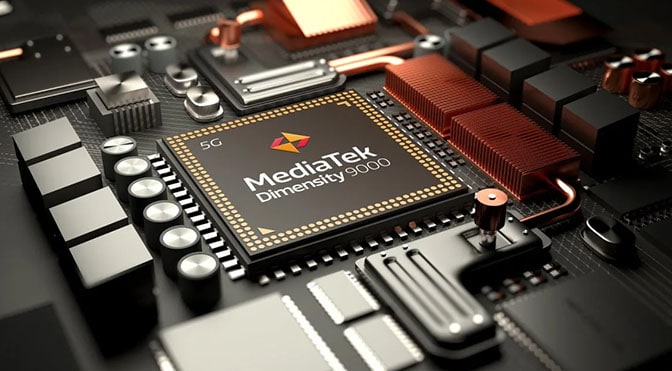In most western nations, MediaTek plays second banana to Qualcomm. The best, and most powerful phones all run on Qualcomm ARM chips, but that might change soon. MediaTek has just announced its first true flagship system-on-a-chip (SoC) in years, which it’s calling Dimensity 9000. It’s the world’s first 4nm chip from TSMC, and it has all the latest technology. Still, this isn’t MediaTek’s first attempt to get into the premium segment, and Qualcomm is entrenched, to say the least.
Despite its reputation as an also-ran chipmaker, MediaTek has had a very successful few years. Its components power smart speakers, the new Kindle, and uncountable mid-range smartphones around the world. In fact, MediaTek recently attained the top spot among global SoC makers with a 40 percent overall market share and 28 percent of the 5G market. In its new position as the market leader, the Dimensity 9000 starts to make more sense.
MediaTek didn’t go crazy cramming in ten CPU cores as it did with its last flagship attempt. The Dimensity 9000 is an octa-core chip, but it does have the latest core designs from ARM—they’re so new you might not even recognize the names. At the forefront is a Cortex X2 clocked at 3.05GHz, and that’s paired with three slightly slower 2.85GHz Cortex-A710 cores. The rest of the CPU is composed of four Cortex-A510 cores at 1.8GHz. The new X2 core clock is surprisingly high, which could give MediaTek a single-threaded processing advantage even as Samsung and Qualcomm move to adopt the X2 down the road.
MediaTek didn’t stop with the CPU—the Dimensity 900 is also the first mobile SoC with support for LPDDR5X memory. The company says that it will allow for a 17 percent boost in available memory bandwidth at up to 7,500 Mbps. And yes, the GPU is new, as well. The Dimensity 9000 will be the first SoC to ship with the Mali-G710 GPU. Each GPU core has about twice the performance of older G78 cores, and there are ten of them. It also supports software ray tracing on Vulkan.
Google has talked up the AI capabilities of its new Tensor chip, and MediaTek is hoping to compete with the fifth iteration of its custom NPU. The company says the new APU core is four times more powerful and four times more efficient than the last one. That hypothetically puts it just in front of Google’s Tensor. Naturally, the image signal processor (ISP) supports all the latest ultra-high-resolution displays, HDR, high refresh rates—the whole nine yards.
The only thing the Dimensity 9000 is missing is millimeter wave 5G. It has sub-6 support that will cover every carrier in the world, but the lack of mmWave might make it a tough sell for the US market. For that reason, Qualcomm will probably retain its niche in the US market. That’s a bummer because mmWave is bad, and the Dimensity 9000 seems pretty good. The first devices with this chip should appear early next year.

